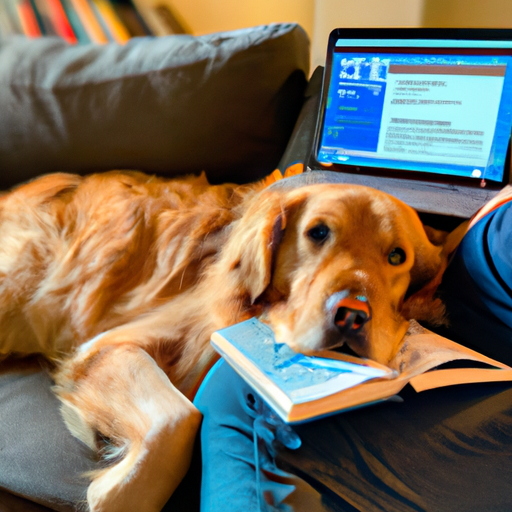“`markdown
What Does it Mean When Dogs Lay on You?
As a caregiver, understanding your dog’s behaviors can often feel like learning a new language. Let’s dive into one of the most common canine behaviors: laying on you.
1. Expression of Affection
When dogs lay on you, it’s a clear sign of their love and trust. They’re comfortable with you and they want to be close to you. This behavior can be compared to a human hug, but in a dog’s language.
- Dogs express love by staying close to their human companions.
- Laying on you can be their way of saying “I love you.”
Just as humans express affection through touch, so do dogs. They simply have a different way of showing it.
2. Seeking Comfort
Another reason dogs may lay on you is to seek comfort.
- Dogs are pack animals by nature.
- They feel safer when they’re close to their pack members.
Your dog sees you as part of their pack and feels safe when they’re near you. This is a testament to the bond you’ve built with your furry friend.
3. Marking Their Territory
Dogs have a strong sense of territory. By laying on you, they’re marking you as their own.
| Behavior | Meaning |
|---|---|
| Laying on you | “This is my human” |
4. Seeking Attention
Sometimes, your dog just wants your attention and laying on you is a sure-fire way to get it.
- They may want to play.
- They might be hungry.
Whatever the reason, it’s their way of saying “Hey, look at me!”
5. They’re Just Comfortable
Lastly, your dog might simply find you comfortable. Think of yourself as a living, breathing piece of furniture. Your lap might just be their favorite spot to nap!
FAQ
Q: Why does my dog always lay on me?
A: Your dog might lay on you for a variety of reasons. They might love you, feel safe with you, want to mark you as their territory, seek your attention, or simply find you comfortable.
Q: Is it bad if my dog lays on me too much?
A: Not necessarily. As long as your dog isn’t showing signs of aggression or possessiveness, it’s perfectly fine.
Q: What should I do if my dog lays on me too much?
A: If it’s becoming a problem, you can gently discourage the behavior by moving your dog to their bed or a comfortable spot on the floor.
“`



